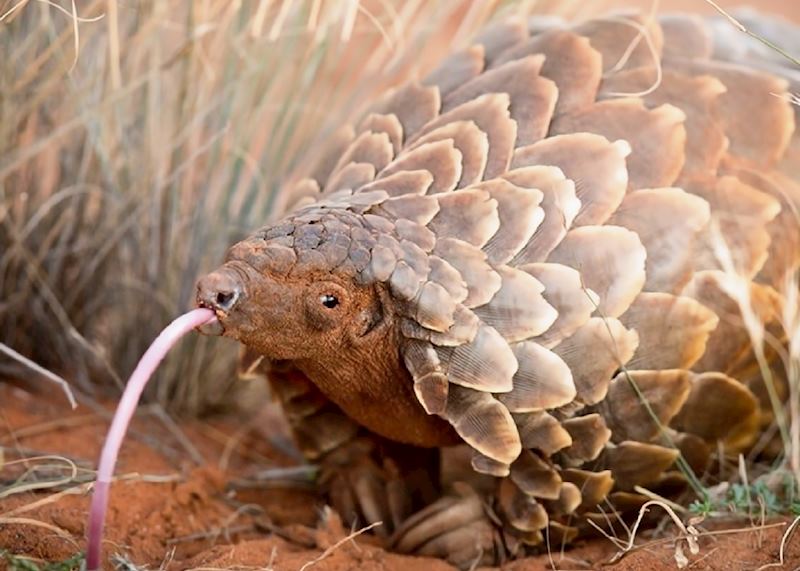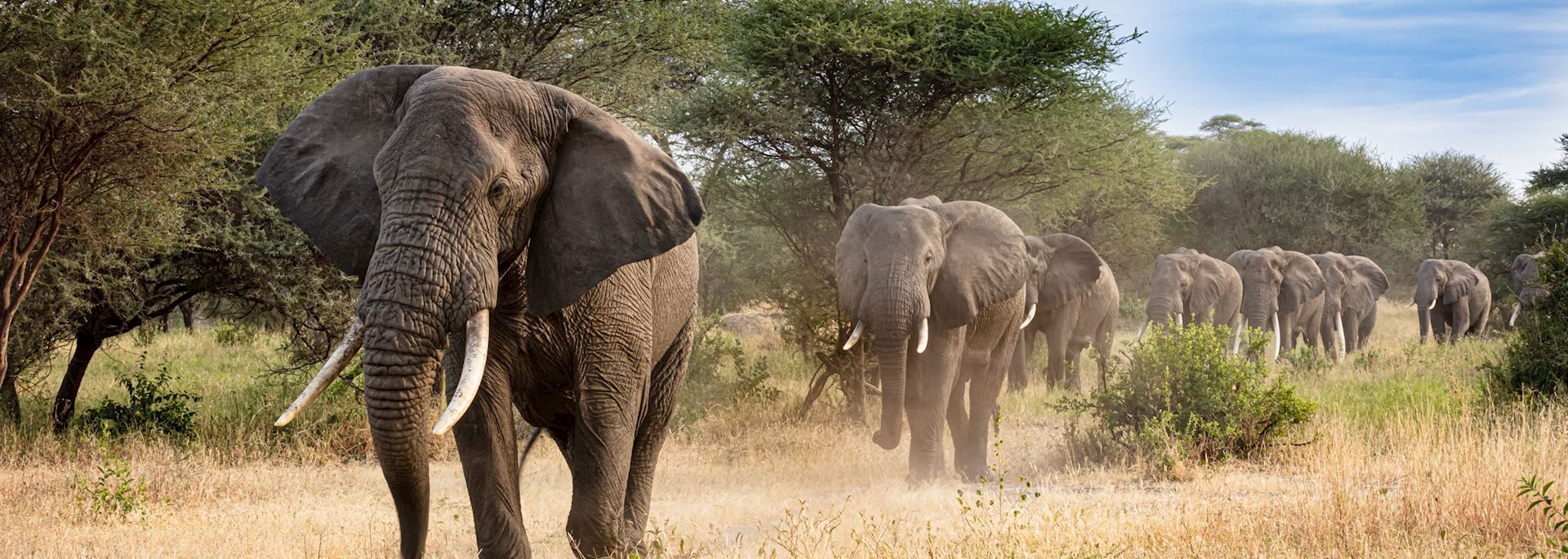Sweeping savannas, grassy wetlands, and wind-sculpted dunes play host to hundreds of creatures across Africa, from tiny reptiles to the largest mammals on the planet. Which ones capture the public’s attention the most? We’ve delved into UK Google search data to find out.
Below, we reveal the top ten African safari animals and why they’ve earned a spot on our list. We’ve also gathered expert insights from our Africa specialists to let you know where you can see each species in its natural habitat, unveiling the best safari experiences across the continent.
1. Lion
Despite their apex-predator status in the animal kingdom, lions have captured people’s hearts since childhood, with beloved films and whole documentaries dedicated to their hunting prowess. That’s why it’s no surprise to see them on our list of top ten African safari animals. The good news is that you can see lions across Africa with relative ease, though each destination offers a different experience.
If it’s your first safari and you’d like to see all of the Big Five (lions, leopards, elephants, buffalo, and rhinos), you can’t go amiss with a trip to South Africa’s Greater Kruger Region, which you can pair with a city break in Cape Town. Or, to witness the drama of the Great Migration, when herds of migrating wildebeest attract opportunistic prides, head to the Serengeti in northern Tanzania.
For a luxury lion-spotting experience, we recommend a trip to Botswana’s Okavango Delta. Alongside safari drives and boat rides, you can head out on foot with a guide who’ll point out the paw prints of resident cats as you walk, before you retreat to your luxury lodge.
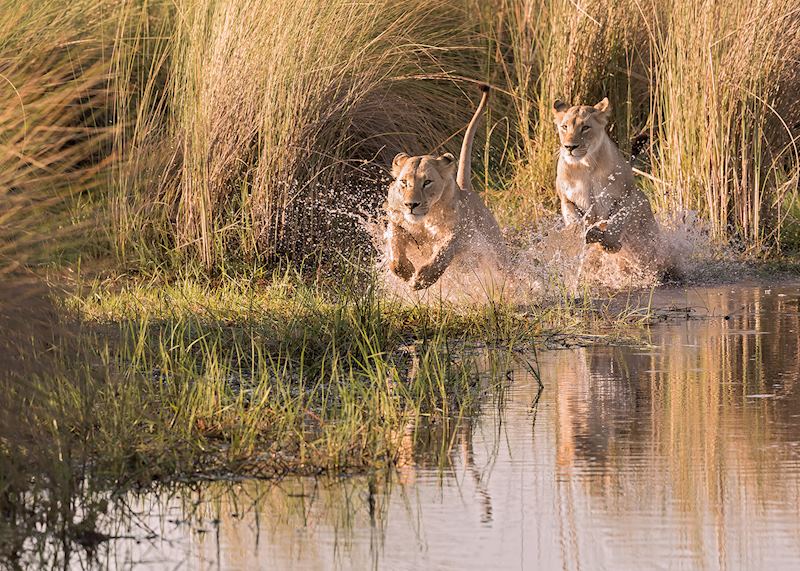
2. Elephant
Towering high above the undergrowth, elephants are the largest land animals currently on the planet, but they’re also gentle giants capable of displaying deep emotions. On safari, you can watch elephant herds frolic in waterholes, walk in convoy trunk-to-tail across the plains, and graze lazily under the sun, all the while learning about their intricate social structures and communication methods.
You’ll spot elephants across Southern and Eastern Africa. However, the highest concentration on the continent is in Botswana’s Chobe National Park, which we suggest pairing with a trip to the Okavango Delta. As you look out for herds among the region’s grassy floodplains, your guide might also point out leopards, cheetahs, and buffalo.
Or, for an entirely different elephant experience, you could opt for Namibia instead. Here, the local population has adapted to the desert climate and you can see herds wander against a stark backdrop of sun-scorched peaks.
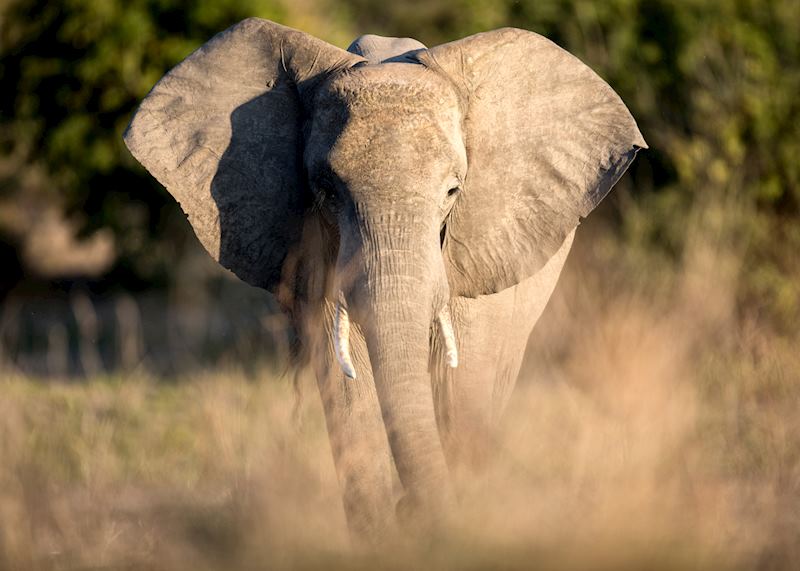
3. Giraffe
Coat patterns as unique as our fingerprints. Legs that appear to run in slow motion. Winding tongues that grapple with tree branches high above the savanna floor. Giraffes are curious creatures and unlike any other living animal on the planet. For this reason, it’s easy to see why they rank in third place on our list of top ten African safari animals.
On a trip to Nyerere National Park in Tanzania, you can watch as herds of over 50 giraffes congregate at the lakes, sliding into a splits-like position to crane their long necks down to water level. Or, for a rare opportunity to soar above these gangly creatures, take a hot-air balloon ride over the Masai Mara on a luxury safari in Kenya.
Another of our top destinations for giraffe-spotting is Botswana, at Thamo Telele lodge. Located just outside of Maun, the lodge boasts its own herd of 20 giraffes, which graze at the nearby waterhole. During your stay, its team of naturalists can teach you how to identify each individual by their distinct spot patterns. And, a portion of the money from your stay will go toward the Giraffe Conservation Foundation, which supports the species throughout Africa.
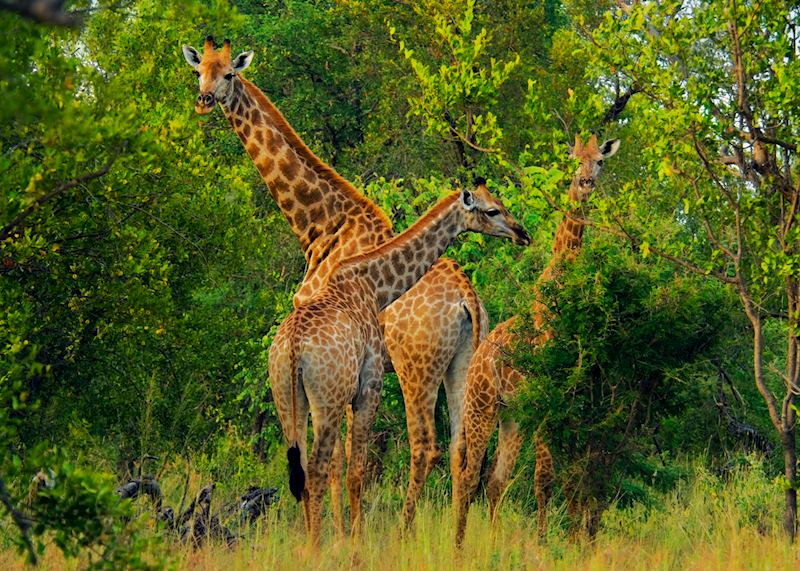
4. Gorilla
After chimpanzees and bonobos, gorillas are humans’ closest living relatives and share up to 98% of our DNA. It’s perhaps this odd familiarity that makes gorillas one of the top safari animals in Africa. Not only that, but you can only encounter mountain gorillas in the wild — they don’t survive in captivity.
Two of the only places you can get up close with these elusive (and often shy) creatures is in Rwanda’s Volcanoes National Park or Uganda’s Bwindi Impenetrable Forest. Encountering a troop often involves hours of hiking and bushwhacking through primeval forest with an expert guide, but this makes it all the more special when you finally set eyes on them.
To recuperate, you could add on time at the beaches of Zanzibar, doing as much or as little as you want on the sugar-soft sands. Alternatively, expand your safari beyond gorillas and take a primate tracking trip through Rwanda to spot chimpanzees and golden monkeys as well.
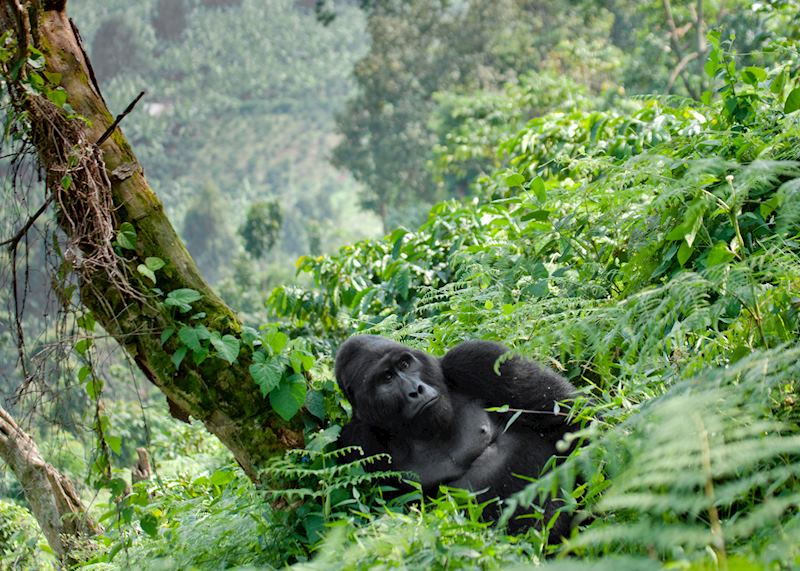
5. Flamingo
In whimsical shades of coral, pastel, and fuchsia, flamingos appear like something out of a fairytale. When flocked together, they paint the landscape in a pearly pink hue and, during breeding season, the males ‘dance’ in unison, heads bobbing and wings flapping as one.
Our specialists recommend taking a trip through northern Tanzania to spot flamingos, hippos, and tree-climbing lions in Lake Manyara before heading into the wilds of the Serengeti. If you’re an avid flamingo fan, you could also venture further north to Lake Natron, where around 75% of the world’s lesser flamingo population is born.
Alternatively, spot these fancy-feathered creatures at Lake Nakuru National Park in Kenya, just a couple of hours’ drive from Nairobi, which you can tie in with a wider safari and beach trip. Here, we recommend staying at a lava-stone cottage at Mbweha Camp, heading out on wildlife drives with your guide to watch the birds blanket the lake in a cloud of pink.
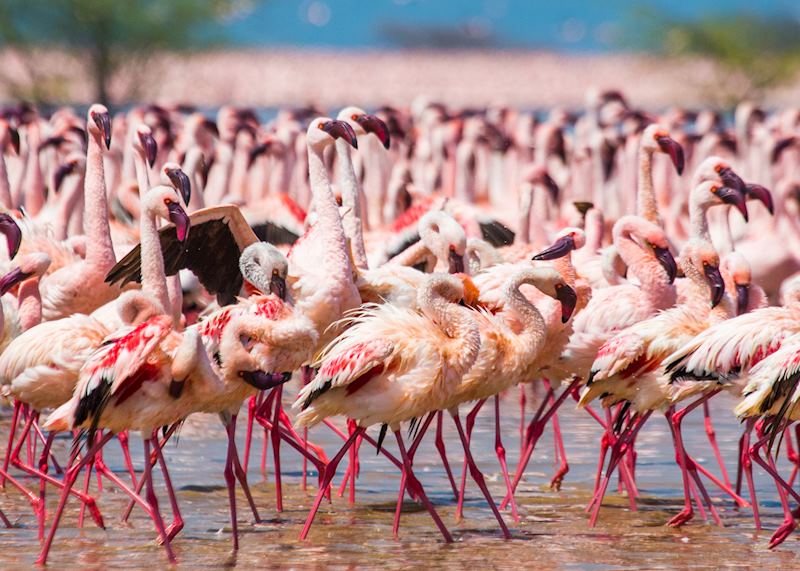
6. Crocodile
With their prehistoric appearance and powerful jaws, crocodiles are always high on people’s safari wish lists and feature in sixth place in our own list of top ten African safari animals. You can watch them basking lazily in the sun, gliding ominously through the water, or grappling with prey as they reveal an impressive collection of serrated teeth.
Perhaps the most exhilarating way to see crocodiles on safari is from the banks of the Mara River during the Great Migration. Here, they lurk and leap out of the water hoping to catch wildebeest and zebras as they dash to the other side. You can witness the drama on a trip to Tanzania or Kenya between July and October.
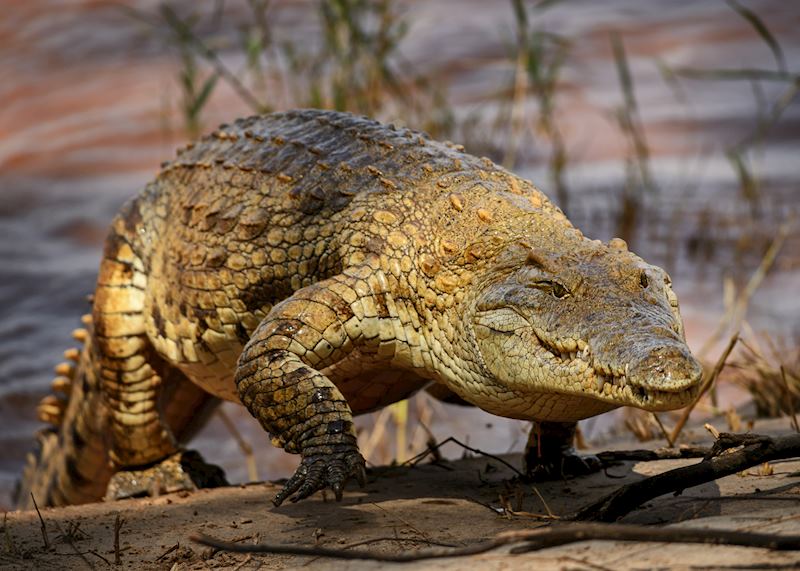
7. Meerkat
Inquisitive, cute, and endearingly comical, meerkats have gained something of a cult following in recent years, cementing themselves in popular culture. Though they’ve appeared on our screens time and time again, you can get to know their true character out in the savanna, where groups of them bundle together, standing tall on their hind legs to surveil their surroundings and scare off oncoming predators.
On a trip to Botswana’s Makgadikgadi salt pans, you can spot these fuzzy creatures scampering around the remains of Africa’s ancient super lake, alongside mongooses, brown hyenas, and aardvarks. Or, if you’d prefer the coast to the desert, take a trip along South Africa’s scenic Garden Route, starting at Oudtshoorn. Here, you’ll head out into the bush at sunrise with a guide, who’ll take you to the meerkats’ burrows. As you sit down with a cup of coffee, you can watch them cavort and forage beneath the morning sun.

8. Leopard
One of the more elusive members of the Big Five, leopards aren’t always easy to see on safari, but that’s precisely why they’re so popular. With a dazzle of black spots, they’re experts at camouflaging themselves in the dense bush and often only come out at night. If you’re lucky enough to spot one, you’ll likely find them draped indulgently upon a tree branch.
You might catch a glimpse of one on safari in South Africa’s Greater Kruger Region, Zambia’s South Luangwa National Park, or in Kenya’s Masai Mara National Reserve, among others. But a wildlife trip to Namibia is top of our list for leopard enthusiasts.
Okonjima Luxury Bush Camp is home to AfriCat, a foundation set up to protect Africa’s large predators. While here, you can head out with a researcher to follow the radio signals given off by the leopards’ collars. Not only are you more likely spot a leopard this way, but you can also contribute to science by collecting much-needed data during your trip.
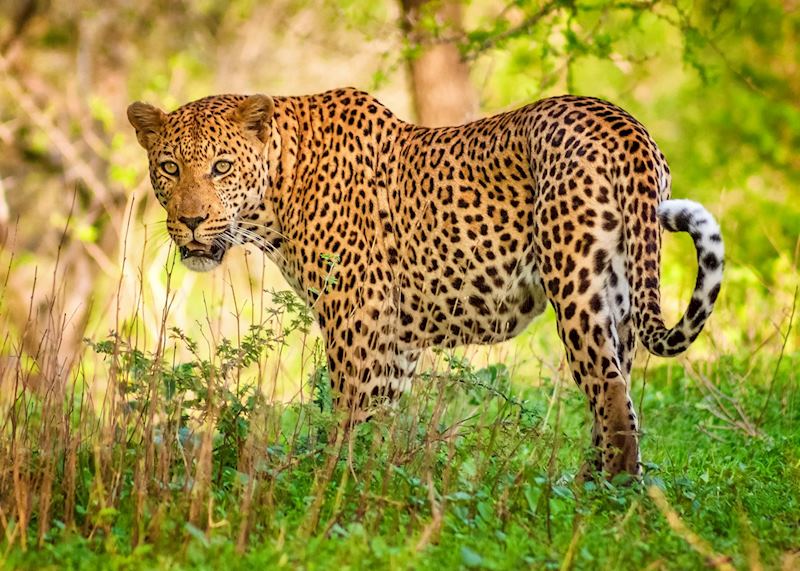
9. Buffalo
Leaving a trail of dust in their wake, buffalo move in huge herds, often fighting off lions as they go. During drier months, you’ll find them hanging around waterholes and floodplains, congregating in their hundreds for protection. When water is more abundant, they don’t linger as long, moving about constantly in search of food.
You can see buffalo herds in many parks and reserves across East and Southern Africa, but you’re most likely to encounter them wherever there’s a good water source (buffalo need to drink every day). Botswana is one of our top destinations for buffalo sightings, with herds moving between the Okavango Delta and Chobe National Park regularly. You can combine the two regions in a single trip, taking boat and mokoro (canoe) rides to spot the resident buffalo from a different perspective.
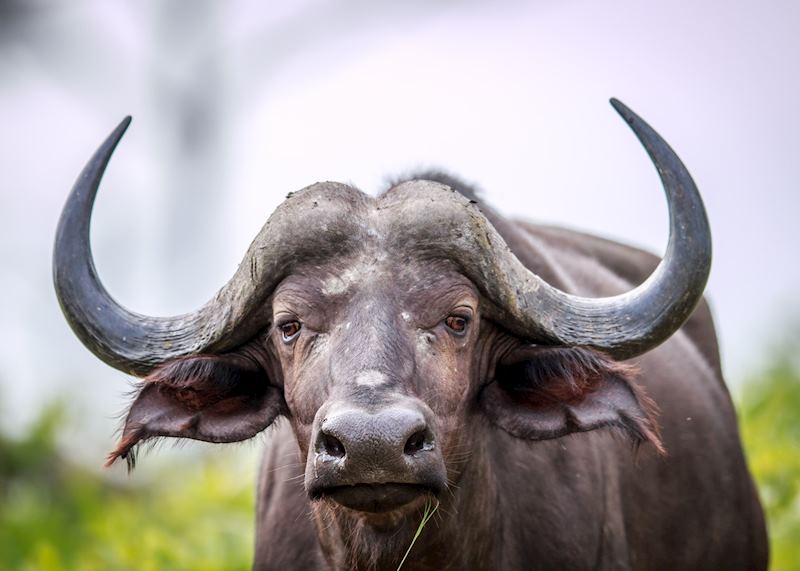
10. Pangolin
Solitary, nocturnal, and the world’s most trafficked mammal, pangolins are mysterious little creatures. It’s perhaps this elusiveness that earns them a place in our list of top ten African animals. In fact, pangolins are often seen as the holy grail of safari because they’re incredibly difficult to spot.
To increase your chances of seeing one, our specialists once again recommend a stay at Okonjima Luxury Bush Camp on a wildlife tour of Namibia. The camp is in the Okonjima Nature Reserve, where conservationist Kelsey Prediger set up the Pangolin Conservation and Research Foundation.
During your stay, you can don a headlamp and go out into the bush at night with a researcher to look for these enigmatic animals. If you’re lucky, you might catch one scurrying along or rolling up into a scaly armoured ball.
